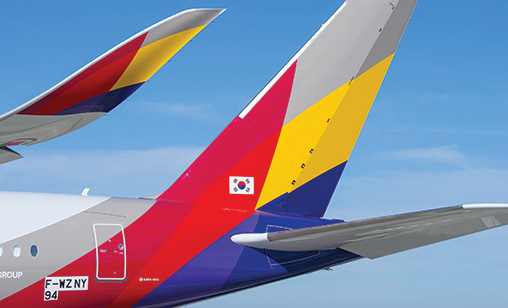Orient Aviation 2020 Year in Review
December 1st 2020
SEPTEMBER
Creditors approved Bain Capital’s proposed takeover of VA, with the company to exit voluntary administration but without its 777-300ERs and A330-200s. Read More » Long-haul flying and its LCC, Tigerair Australia, were shut down and at least 3,000 employees lost their jobs.
While SIA held out longer than most in retaining staff, this month it was forced to announce 4,300 employees would have to leave the company, including 2,400 positions described as involuntary staff reduction measures. For SIA Group CEO, Goh Choon Phong, it was the “hardest and most agonising decision” he had faced in his three decades at the company.
 |
Another potential South Korean airline merger fell apart when the proposed takeover of Asiana Airlines, led by Hyundai Development Company (HDC) and Mirae Asset Daewoo, collapsed.
Asiana’s major shareholder, Kumho Industrial, and HDC blamed each other for the collapse of the deal. Asiana CEO, Han Chang-soo, said in a letter to staff the decision was inevitable if the company’s value as a corporation was to be preserved.
It has been interesting to observe how airlines – and aviation companies in general – have responded to COVID-19 by trying to increase non-flying revenues.
Arguably the leader of the pack has been THAI, which opened a restaurant at its Bangkok head office serving food prepared by chefs from its catering unit. The aviation theme is evident from arrival with entry to the restaurant via a set of aircraft stairs. Diners are seated on repurposed cabin seats and eat from tables made from aircraft parts such as engines and tyres. THAI also began operating street stalls selling patonggo, a popular deep fried dough snack and selling bags made from up-cycled life vests and slide rafts.
Away from all the tribulations of COVID-19, Boeing updated its 2020 ecoDemonstrator program. An Etihad 787-10 is operating as a flying test bed to research noise reduction, on board disinfection, airspace and operational efficiency, the use of sustainable aviation fuel and the evaluation of an ultraviolet wand that can disinfect a flight deck in 15 minutes. The wand is under licence for production.
On September 21, Airbus unveiled three concepts, all code-named ZEROe, of the world’s first zero emissions commercial aircraft. The goal is entry-into-service by 2035. The three concepts rely on hydrogen as their primary power sources. Airbus CEO, Guillaume Faury, said he “strongly believed hydrogen power had the potential to reduce aviation’s climate impact”.